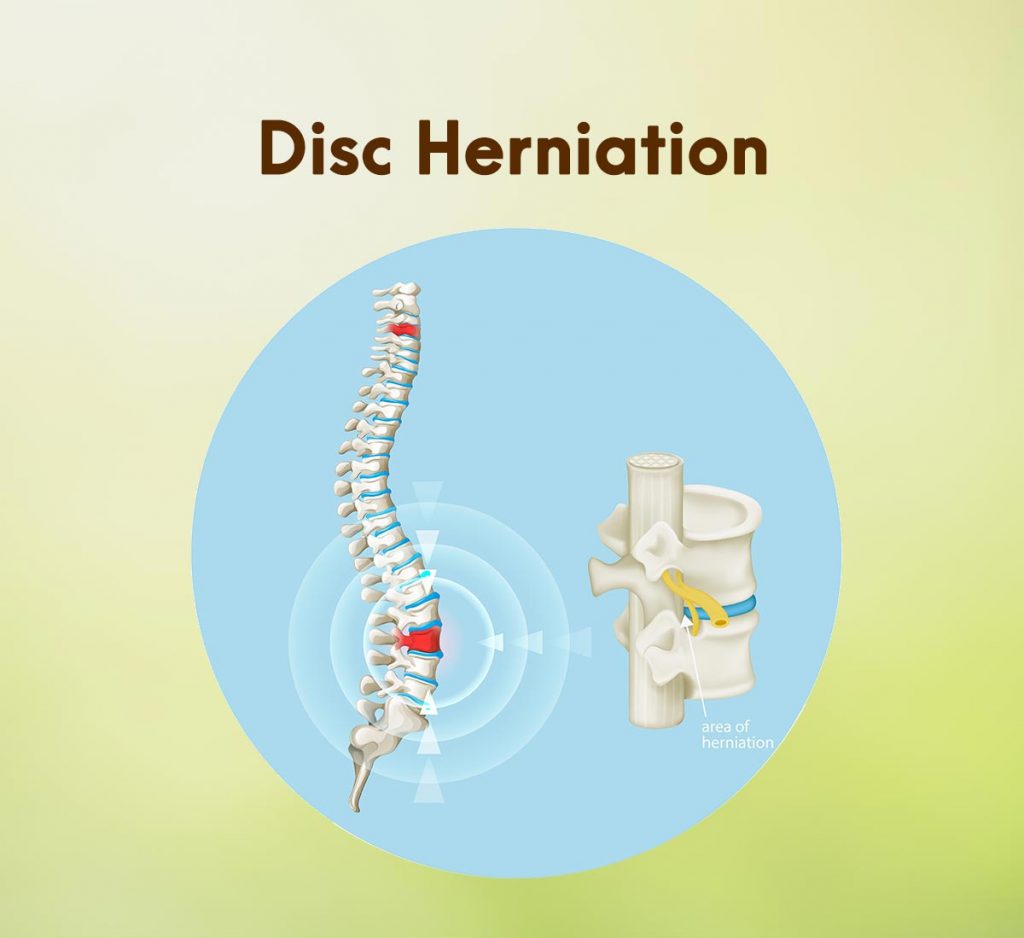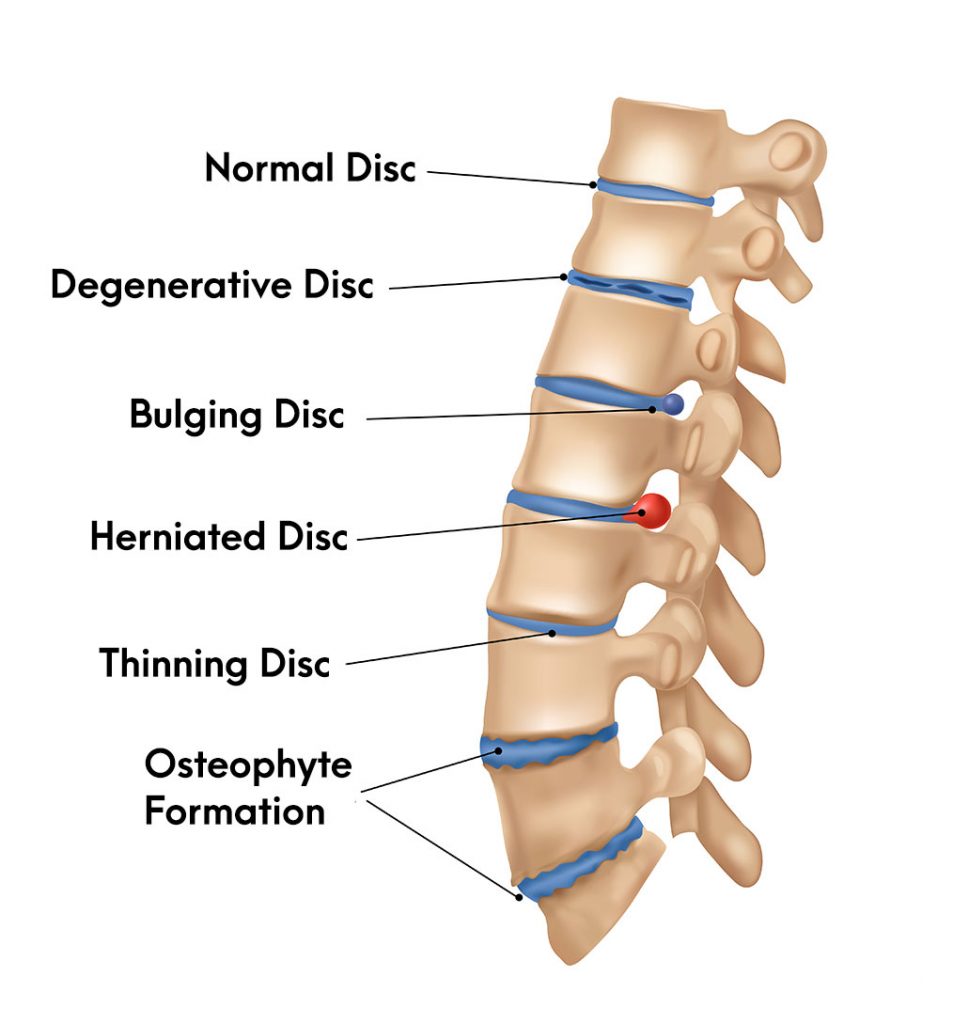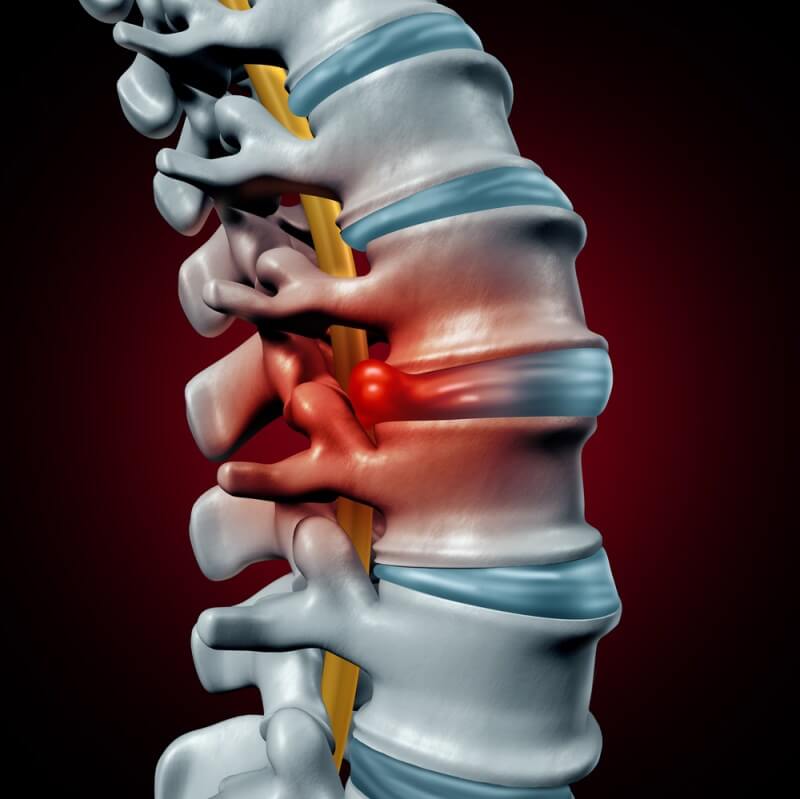One of the most common spinal problems people experience is a herniated disk. A herniated disk can occur in any of the three main regions of the spinal cord and can lead to a variety of symptoms, ranging from numbness to intense pain. There are a number of diagnostic procedures a doctor can order in order to pinpoint the location of the herniated disk and develop the appropriate treatment plan.
What is a Herniated Disk?
The spinal column is made up of a set of bones called vertebrae that are separated by spongy disks. The spongy disks have a tough outer layer (annulus) and an interior jellylike material (nucleus).

The herniated disk develops when the fibrous outer portion of the disk tears or ruptures, and the soft center is pushed out as the disk collapses. Herniated disks occur in one of three regions of the spinal column called the cervical (neck), thoracic (longest region of upper back and abdomen) and lumbar (lower back) regions. Anyone can develop a herniated disk in neck/in back/lower back of the spinal column.
What Does a Herniated Disk Feel Like?
People with a herniated disk may or may not experience symptoms. Some people have no symptoms, though that does not mean they should be ignored. However, many people do experience symptoms. In the center of the spinal column is the spinal canal, which holds the spinal cord and spinal nerves. When the disk collapses and the soft center is pushed out, nerves are often irritated.

The most common location of a herniated disk is in the lower back, followed by the neck. What does a herniated disk feel like? Symptoms of a herniated disk can vary quite a bit and include:
- Pain – A herniated disk in the lower back can be very painful. The worst herniated disk pain in this case is felt in the buttocks, calf and thigh and may even shoot down to the foot. If the problem is in the neck, the pain is usually in the arm and shoulder.
- Muscle weakness – Nerves enable muscles to function. When a nerve is impacted, one or more muscles may weaken. The result is the person may have difficulty walking or lifting items.
- Tingling or numbness – The parts of the body served by the nerves may experience tingling or numbness.
Not everyone experiences symptoms of herniated disk. They may never discover they have a herniated disk, or they learn about it when being treated for another problem.
How to Fix a Herniated Disk?
It is often pain that drives patients to see a doctor, though all of the symptoms indicate a need for medical attention. The herniated disk in the neck/in back/lower back is first diagnosed by conducting a number of tests that include:
- Neurological exam
- Imaging tests like x-rays, CT scans, MRI or myelograms
- Nerve conduction tests

Once the doctor has identified the herniated disk, the next step is designing a plan to treat it. People with the typical symptoms of a herniated disk are worried, of course, and want to know how to fix a herniated disk. Treatment options include:
- Exercises – Doing herniated disk exercises is an important component of the treatment plan. They are designed to strengthen muscles, tendons and ligaments to take as much pressure as possible off the spine.
- Physical therapy – This treatment addresses ways to minimize pain by changing certain movements. The physical therapist can also teach patients some of the safe herniated disk exercises to do at home.
- Medications – The type of medication that is most effective will depend on the level of pain and the nerves impacted. Pain relievers include over-the-counter medications, anticonvulsants, muscle relaxers and cortisone injections. Sometimes narcotics are prescribed but only to give a patient temporary relief from pain while a treatment plan is designed.
- Surgery – Only people who do not respond to the other treatment options, and continue to experience intense pain or numbness that impacts the ability to function, are considered for surgery.
The treatment plan for a herniated disk is a joint effort between the patient and the doctor.
Exercise and Pain Control
The importance of regularly exercising to control herniated disk pain cannot be overstated. Exercises include:
- Stretching exercises
- Yoga and Pilates
- Lumbar stabilization exercises
- Spinal decompression (hanging from a bar by the hands)
- Low-impact aerobic exercises
Some exercises should be avoided, like sit-ups which place pressure on the lower back. The goal is to target the tissues impacted by the herniated disk to minimize pain. The good news for patients is that a herniated disk in neck/in back/lower back is not a prescription for a life of pain.
